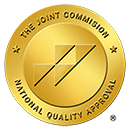Work Related Emergencies: When to Come to the ER
Work related emergencies are a common occurrence. No matter how careful we are as individuals, nor how many health and safety rules an employer puts into place, accidents can and will happen.
Here are the most common work related injuries
Manual Handling
In some occupations, manual handling of heavy loads is unavoidable. One study reveals almost a third of workplace accidents relate to lifting or pushing a load.
Employers need to provide protection for workers against the injuries that can result from excessive and repetitive manual lifting and carrying. From initial risk assessment to the installation of lifting or load bearing equipment, the company must analyze and minimize the physical risks involved in the job.
Musculoskeletal Disorders (MSD) include damage to joints or other tissues in the upper or lower limbs or the back. Also included in this category of injuries is RSI, although this is generally not thought of as being caused by heavy lifting or lowering, carrying or pushing.
Often, MSD injuries result in prolonged periods off work, extensive treatment and occasionally an inability to return to previous employment.
While some injuries of this type come on gradually over a period of time (sometimes years), other instances happen quickly, such as slipped discs, joint or muscle strains. If you experience sudden pain that does not get better quickly or prevents you continuing to work, an ER visit should be considered to assess the damage and determine treatment.
Some MSDs can be prevented, but not all. Report symptoms as soon as you notice them, seeking proper treatment and rehabilitation to prevent further damage.
Repetitive Strain Injury (RSI)
RSI is commonly associated with typists or computer keyboard users, although anyone who repeatedly carries out the same movement is at risk. Even children can develop RSI when they play computer games for too long, which is one reason why it’s important to limit their game console or computer time.
The most common areas of the body affected by RSI are:
- Elbows, wrists and fingers
- Shoulder and upper or lower arms
- Thumbs
- Upper and lower back
Symptoms include tingling, coldness and numbness or loss of feeling, and can be excruciating. Your primary care provider could help you investigate recurring pain and determine the cause or treatment, or alternatively the emergency room can help with pain management or diagnosis if you suspect another cause. Some treatments available for RSI include wrist supports or splints, anti inflammatory drugs, physiotherapy and acupuncture.
Prevention is far better than cure since RSI can impact quality of life, not just your ability to work. RSI in the fingers, for instance, can make simple tasks like chopping vegetables difficult.
Prevention methods include:
- Frequently changing position
- Warming up muscles before working them
- Correct posture
- Avoiding tension in muscles
- Taking regular breaks
Once the injury is sustained, flare-ups can happen if repetitive tasks are taken up again.
Falls, Slips and Trips
Thousands of people are injured at work through tripping or slipping, resulting in many a visit to the emergency room.
In a busy working environment, everyone needs to take some responsibility for their own safety as well as those of others around them. One of the most effective solutions is to adopt an attitude whereby you take responsibility to report or sort out a hazard as soon as you spot it, regardless of who is actually responsible.
There are hazards in just about every line of work and every type of building, including trailing electrical cables, wet floors, frayed carpets, stairs and uneven surfaces.
Workers Compensation for Work Related Emergencies
Workers compensation insurance covers treatment or diagnosis of many work related emergencies. If you’re claiming for medical treatment under the workers compensation insurance scheme, try to follow these guidelines so your claim isn’t denied:
- Report the Injury Immediately – If you don’t, insurers could assume you weren’t really hurt. Sometimes even minor injuries can develop complications, so always report mishaps or accidents to your supervisor when they happen. You’ll probably be asked to fill out an accident report, and this will help you comply with the law.
- Keep Your Account Consistent – workers’ compensation claims are sometimes denied when there are conflicting reports about how the accident happened. Make sure you give the same account of the accident to everyone, including friends or colleagues.
- Claim Before You’re Laid Off — This is another reason to report accidents and file claims as soon as possible. Layoffs can happen out of the blue, and insurers sometimes view claims made from ex-employees with suspicion.
For many work related injuries, the emergency room is your fastest route for getting effective and timely diagnosis and treatment. Knowing the best ways to keep yourself safe at work, and your rights in the event of an accident, puts you in the strongest position for successful healing and benefit payments.




